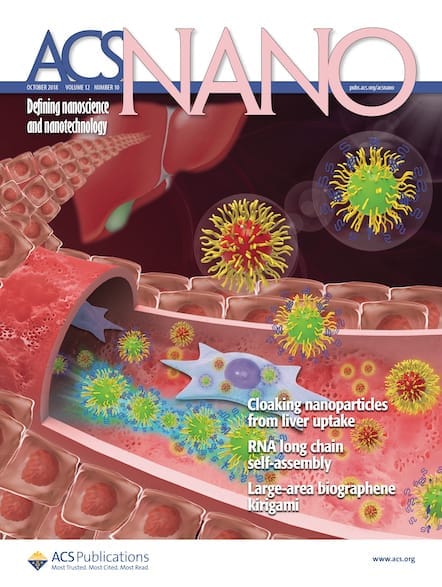Zebrafish (Danio rerio) are widely used as a model organism for developmental biology. But after being frozen and thawed, zebrafish embryos rarely survive, meaning that researchers can only do experiments on live ones and can’t store embryos for later experiments or to share with other labs. Now, researchers report that injecting zebrafish embryos with gold […]

Zebrafish (Danio rerio) are widely used as a model organism for developmental biology. But after being frozen and thawed, zebrafish embryos rarely survive, meaning that researchers can only do experiments on live ones and can’t store embryos for later experiments or to share with other labs.
Now, researchers report that injecting zebrafish embryos with gold nanorods can improve their viability when thawed, offering the possibility of long-term storage. With further development, the technique could also serve as a tool for the conservation of endangered species.
The work is “very creative,” says Mehmet Toner of Harvard Medical School, who was not involved with the study. “Zebrafish are a very important molecular biology tool, and the embryos are extremely difficult to cryopreserve, but this technique could make it cost effective and practical for many laboratories.”
During freezing and thawing, intracellular liquids can form needlelike ice crystals that pierce cell membranes and kill cells. Injecting cryoprotective chemicals that prevent ice crystal formation can help. But another problem is that when cells warm up unevenly, as when embryos are thawed in a water bath, intracellular proteins get scrambled, explains Nilay Chakraborty of the University of Michigan, Dearborn, who was not involved with the research. “Think of it as having an oven that doesn’t heat well, so some parts are undercooked and others are burnt.”
Changing temperatures quickly and evenly throughout the entire volume of the embryo is crucial. This is feasible for small mammalian embryos but difficult for zebrafish, whose embryos are approximately seven times as large as human ones.
Looking for a solution, John C. Bischof of the University of Minnesota, Twin Cities and his colleagues injected a combination of propylene glycol, which acts as a biocompatible antifreeze, and gold nanoparticles into zebrafish embryos before freezing them in liquid nitrogen. After a few minutes, the team thawed the embryos with a millisecond pulse from a laser. The gold nanoparticles absorbed this energy and warmed the embryos quickly and evenly, at a rate faster than ice crystals could form. One hour after warming, 31% of the embryos were viable. They continued to develop normally for a day and were twitching their tails, not appearing to suffer any toxic effects. In contrast, a set of embryos frozen with the nanorods but warmed conventionally using a water bath did not survive thawing.
The laser-heated embryos still died after about 24 hours and did not develop into full-grown adults. But for now, the current technology could still prove useful for research, says Chakraborty. “It depends on what the end goal is: Do you want a swimming zebrafish or to look at a particular protein’s expression during early embryonic development?”
Refining the technique so that the animals can grow to adulthood might help conservation efforts for certain endangered species that have large, hard-to-freeze embryos, including amphibians, birds, and reptiles. “This is a platform that can be applied across species,” Bischof says.
This article is reproduced with permission from C&EN (© American Chemical Society). The article was first published on August 8, 2017.
